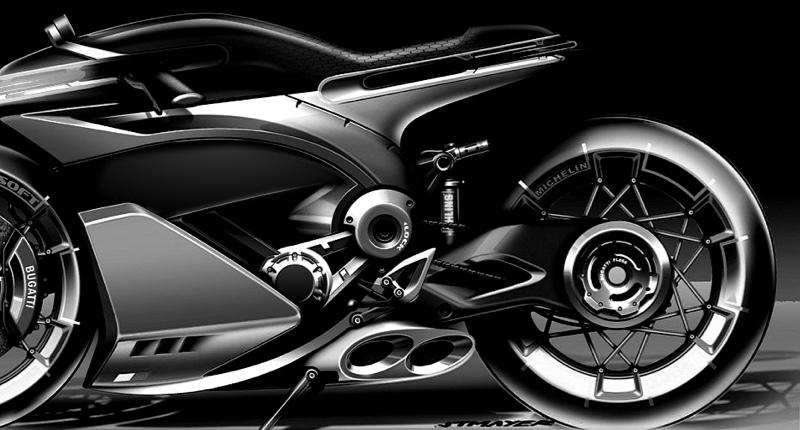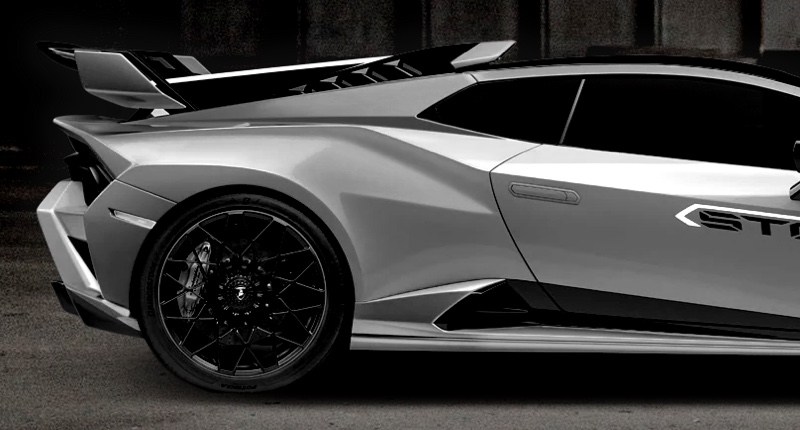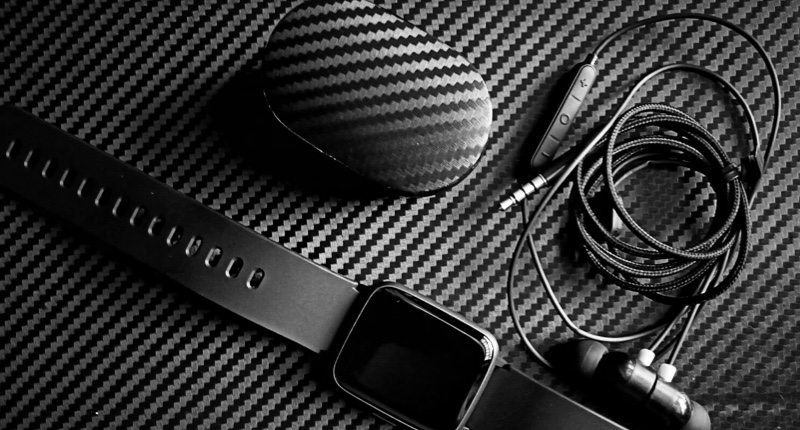How to Tell Dry Carbon from Wet Carbon Parts
- How to Tell Dry Carbon from Wet Carbon Parts — dry carbon vs wet carbon
- Why the dry carbon vs wet carbon distinction matters for buyers
- Visual differences: weave clarity, resin surface, and clearcoat — dry carbon vs wet carbon
- Surface feel, weight, and tactile tests to distinguish dry carbon vs wet carbon
- Manufacturing differences: prepreg/autoclave (dry) vs wet layup processes and implications
- Performance and durability: practical differences between dry carbon vs wet carbon parts
- Pricing and value: how dry carbon vs wet carbon affects cost and ROI
- How to verify authenticity: questions to ask suppliers when comparing dry carbon vs wet carbon
- Simple in-shop checks: non-destructive tests to tell dry carbon from wet carbon parts
- Care and repair: maintenance differences for dry carbon vs wet carbon parts
- Quick comparison table: dry carbon vs wet carbon parts
- Why choose Supreem Carbon when comparing dry carbon vs wet carbon parts
- What to ask Supreem Carbon or any manufacturer when ordering parts
- FAQs — common questions about dry carbon vs wet carbon
- Next steps and contact — buy or verify your carbon fiber parts
- Sources and references
How to Tell Dry Carbon from Wet Carbon Parts — dry carbon vs wet carbon
Why the dry carbon vs wet carbon distinction matters for buyers
Carbon fiber parts are common in automotive and motorcycle aftermarket and OEM applications. Understanding dry carbon vs wet carbon helps you choose the right part for appearance, durability, and safety. This guide gives practical, easy-to-follow methods to tell dry carbon from wet carbon parts, what each process means for performance, and what to ask suppliers when buying carbon fiber parts.
Visual differences: weave clarity, resin surface, and clearcoat — dry carbon vs wet carbon
When comparing dry carbon vs wet carbon visually, the most obvious cues are weave definition and surface finish. Dry carbon parts (prepreg/autoclave) typically show a perfectly uniform weave pattern because the resin content is precisely controlled and the fiber sits flat before curing. The weave appears sharp and continuous across corners and contours. In contrast, wet carbon parts (wet layup) often look slightly muted or 'drowned' by excess resin. The weave pattern can appear blurred, with small pools or slightly uneven sheen where resin accumulated.
Also look for the clearcoat: high-end dry carbon parts usually have a thin, glossy clearcoat that preserves the weave contrast and depth. Wet parts may have a thicker, less consistent clearcoat applied to mask minor surface defects or resin variability.
Practical checks:
- Inspect under good light at multiple angles; dry carbon shows crisp reflections along the fibers.
- Look at edges and corners; dry carbon maintains weave alignment better.
Surface feel, weight, and tactile tests to distinguish dry carbon vs wet carbon
Touch and weight reveal clues. Dry carbon parts tend to be lighter for the same stiffness because the resin content is optimized and minimal. Wet carbon parts can feel slightly heavier or 'denser' because extra resin increases mass.
Run your fingers gently across the surface. A properly finished dry carbon part feels smooth with a consistent microtexture from the clearcoat. A wet layup may feel slightly irregular or have tiny pinholes where trapped air escaped. Tap the part lightly: dry carbon often sounds crisper (higher-pitched) due to lower resin damping; wet carbon sounds a touch more muted.
Note: tactile differences are subtle. Use them with visual and manufacturing checks rather than alone.
Manufacturing differences: prepreg/autoclave (dry) vs wet layup processes and implications
The terms 'dry carbon' and 'wet carbon' refer to how resin is introduced and cured.
Dry carbon (prepreg/autoclave): Fibers are pre-impregnated with a precise amount of resin and stored refrigerated. Parts are laid up, vacuum-bagged, and cured in an autoclave under heat and pressure. This yields a consistent fiber-to-resin ratio, high fiber volume fraction, excellent void control, and superior mechanical properties.
Wet carbon (wet layup): Dry fiber fabrics are placed over molds and resin is applied manually (by brush, roller, or infusion). This method is less controlled, typically done at ambient pressure or vacuum only, and can lead to higher resin content, more voids, and less uniform fiber consolidation.
Why this matters: dry carbon generally offers better stiffness-to-weight and strength-to-weight ratios and a superior surface finish. Wet carbon is more flexible to produce and lower cost, suitable for non-structural cosmetic parts or applications where absolute performance is not critical.
Performance and durability: practical differences between dry carbon vs wet carbon parts
In real-world use, dry carbon parts often deliver better fatigue life and resistance to impact-related cracking because of their higher fiber content and lower voids. Wet carbon parts can be perfectly acceptable for trim pieces, covers, and decorative components, but may show earlier delamination or micro-cracking in high-load or repeated-stress applications.
Consider the application:
- Structural or load-bearing parts (suspension components, chassis braces): prefer dry carbon or certified composite manufacturing.
- Cosmetic parts (interior trim, exterior covers): wet carbon can be a cost-effective option if finished well.
When specifying parts, ask for manufacturing data (fiber volume fraction, cure method) for performance expectations.
Pricing and value: how dry carbon vs wet carbon affects cost and ROI
Dry carbon parts typically cost more because of material preparation (prepreg), autoclave curing, and stricter quality control. Wet carbon parts are less expensive in labor and tooling and require less-capital-intensive equipment.
Evaluate value by application: spending more for dry carbon is justified when weight savings or structural performance matters. For aesthetic upgrades, a well-made wet carbon part may offer a better cost-to-appearance ratio.
How to verify authenticity: questions to ask suppliers when comparing dry carbon vs wet carbon
When buying carbon fiber parts, ask specific questions to verify whether a part is dry or wet carbon:
- What is the manufacturing method (prepreg/autoclave, oven cure, RTM, wet layup)?
- Can you provide photos of the layup and cure process or a batch report?
- What is the fiber type and fiber volume fraction?
- Is there a specified resin system and clearcoat? Are these UV-stable?
- Are there certifications, material test reports, or quality control records?
Inspect product photos closely. Legitimate manufacturers can show layups and tooling photos or offer third-party test data for structural components. If a seller cannot answer these basics, treat the product cautiously.
Simple in-shop checks: non-destructive tests to tell dry carbon from wet carbon parts
If you have the part in hand, use low-cost, non-destructive checks:
- Shine a directional light across the surface: look for weave definition and fiber alignment.
- Weight comparison: if an identical part is available, compare weights.
- Edge inspection: remove a small mirror piece or look at exposed edges; dry carbon has cleaner fiber ends with less resin build-up.
Advanced checks (for professionals): ultrasonic C-scan for voids, X-ray for fiber/resin distribution, or mechanical testing for stiffness — typically done by labs.
Care and repair: maintenance differences for dry carbon vs wet carbon parts
Both dry and wet carbon parts need UV-stable clearcoats; otherwise sunlight can yellow or degrade the resin matrix. Dry carbon's resin systems used in prepreg are often higher-grade and more UV-resistant, but both benefit from periodic inspection and gentle cleaning.
Repairability: wet layup parts may be easier to patch for cosmetic issues, while repairing structural dry carbon requires more care and, ideally, a composite repair specialist to restore original performance.
Maintenance tips:
- Clean with pH-neutral soap, avoid harsh solvents.
- Protect from prolonged sun exposure or use a UV protectant.
- Inspect mounting points and fasteners to prevent stress concentrations and cracks.
Quick comparison table: dry carbon vs wet carbon parts
| Characteristic | Dry Carbon (prepreg/autoclave) | Wet Carbon (wet layup) |
|---|---|---|
| Weave clarity | High, sharp and uniform | Moderate, may appear drowned by resin |
| Resin control | Precise resin content | Higher, variable resin content |
| Weight | Lighter for same stiffness | Slightly heavier due to extra resin |
| Surface finish | Thin, glossy clearcoat; high depth | May require thicker clearcoat to hide imperfections |
| Mechanical properties | Superior strength and fatigue life | Acceptable for non-structural uses |
| Cost | Higher (materials and autoclave) | Lower (less equipment-intensive) |
| Best applications | Structural, high-performance components | Cosmetic parts, trims, covers |
Sources for table data: see sources list at the end of the article.
Why choose Supreem Carbon when comparing dry carbon vs wet carbon parts
Supreem Carbon, established in 2017, is a customized manufacturer of carbon fiber parts for automobiles and motorcycles, integrating R&D, design, production, and sales to deliver high-quality products and services. We specialize in the technology research and development of carbon fiber composite products and the production of related items. Our main offerings include the customization and modification of carbon fiber accessories for vehicles, as well as the manufacturing of carbon fiber luggage and sports equipment.
Our factory spans approximately 4,500 square meters and employs 45 skilled production and technical staff, achieving an annual output value of around 4 million dollars. Currently, we offer over 1,000 types of products, including more than 500 customized carbon fiber parts. Our vision is to become the world's leading carbon fiber products manufacturer. For more details, visit https://www.supreemcarbon.com/.
How Supreem Carbon helps you decide between dry carbon vs wet carbon:
- Product range: we offer both high-quality prepreg (dry carbon) and well-finished wet layup options, letting you choose by application and budget.
- Technical support: our R&D and production teams explain manufacturing methods, fiber types, and expected performance so you can make an informed decision.
- Customization: we provide tailored solutions for carbon fiber motorcycle parts, carbon fiber automobile parts, and customized carbon fiber parts with consistent quality control.
Core competitive advantages:
- Thorough R&D capabilities and process control for repeatable quality.
- A broad catalog including carbon fiber motorcycle parts, carbon fiber automobile parts, and custom carbon fiber products.
- Skilled workforce and factory capacity to support small-batch and large-scale orders with fast turnaround.
What to ask Supreem Carbon or any manufacturer when ordering parts
When you request a quote or specification, ask for:
- Process details: is the part prepreg/autoclave, oven cured, or wet layup?
- Material specifications: fiber type (e.g., T700), resin system, and expected fiber volume fraction.
- Production photos and QC data: layup records, curing cycle, and inspection results.
- Warranty and after-sales support: repairability, minimum order quantities, and lead times.
Supreem Carbon typically provides clear information about manufacturing routes and can tailor the product to match performance or cost priorities.
FAQs — common questions about dry carbon vs wet carbon
Q: Can I tell dry carbon from wet carbon just by looking?A: Often yes, using weave clarity, edge inspection, and finish quality as clues. However, some wet layup parts are finished very well, so ask the manufacturer for process details to be certain.
Q: Is dry carbon always necessary for motorcycle parts?A: Not always. Structural motorcycle parts that carry load or require crash resilience benefit from dry carbon. Cosmetic or low-stress covers can be wet layup if finished properly.
Q: Will wet carbon delaminate faster than dry carbon?A: Wet carbon may have higher resin content and more voids, which can reduce fatigue life. Properly manufactured wet layup with good consolidation can still be durable for non-structural parts.
Q: Are clearcoats different between dry and wet carbon parts?A: Quality dry carbon parts use thin, UV-stable clearcoats to preserve weave depth. Wet parts may use thicker clearcoats to hide surface imperfections. Ask about UV resistance to avoid yellowing.
Q: How much more does dry carbon cost compared to wet carbon?A: Costs vary by part complexity, volume, and supplier. Dry carbon generally commands a High Quality due to prepreg materials and autoclave curing; exact figures depend on order size and specifications.
Next steps and contact — buy or verify your carbon fiber parts
If you need help choosing between dry carbon vs wet carbon for a specific application, or you want custom carbon fiber motorcycle parts, carbon fiber automobile parts, or other customized carbon fiber parts, contact Supreem Carbon. Our R&D team will assess your needs and recommend the right manufacturing route to balance aesthetics, performance, and cost.
Contact us or view products: https://www.supreemcarbon.com/
Common call-to-action: request a quote, ask for manufacturing photos, or request material/test reports before purchase.
Sources and references
- General composites manufacturing and prepreg vs wet layup overviews: CompositesWorld technical articles on prepreg and wet layup practices.
- Manufacturer documentation on prepreg benefits: Toray and Hexcel technical brochures discussing prepreg advantages and autoclave curing.
- Industry discussions on finish, clearcoats and cosmetic differences: trade articles and supplier technical notes on surface finishing and UV-stable clearcoats.
- Practical inspection and NDT techniques: industry-standard non-destructive testing (ultrasonic C-scan, X-ray) references from composite testing literature.
Note: the above sources reflect commonly accepted industry knowledge and composite manufacturing practices as summarized by technical publications and major prepreg suppliers.
Carbon Fibre Custom Made Parts for Your Project Car
Prepreg Carbon Fiber: Complete Beginner's Guide
Custom carbon fiber motorcycle license plate frame Manufacturers and suppliers
Exploring Carbon Fiber Manufacturing: Insight and Expertise from Supreem Carbon
For Products
How can I get some sample?
Actually we dont provide the free sample to customer, you can place a sample order if need some parts.
Which surface could you provide for the carbon parts?
Gloss finish, matte finish, satin finish. Some color coating as the customer needs.
Supreem Carbon parts produce by 100% carbon?
Yes,all products are made from full carbon with dry carbon.
For Facotry
How many employees of Supreem carbon?
We have over 50 employees, including over 40 skilled workers, 3 R&D designers, and 5 QC professionals and so on.
For Order Delivery
How to choose the mode of transportation?
We use official shipment like Fedex,UPS,DHL and so on. Also customer can arrange delivery by themselves.

Yamaha R1 Carbon Fiber Side Fairings
Introducing the Supreem Carbon Fiber Long Side Panels for Yamaha R1. Crafted with precision and expertise, this front side fairing is designed to elevate the performance and aesthetics of your R1. Made from high-quality carbon fiber, this fairing is not only lightweight but also incredibly durable, providing optimal protection for your motorcycle.

Yamaha R1 Carbon Fiber Airbox Tank Cover
The Supreem Carbon Yamaha R1 Carbon Fiber Airbox Tank Cover provides lightweight, durable protection with a sleek finish. Designed for R1 models, it enhances the style and performance of your bike. Its lightweight structure improves performance while maintaining the premium aesthetics necessary for high-end modification projects. As a dedicated manufacturer of carbon fiber parts, we provide stable production capacity, customization options, and strict quality control to support enterprise-level procurement and OEM/ODM needs.

Carbon Fiber Rear Seat Panel for BMW S1000R & M1000RR – Lightweight Performance
This carbon fiber rear seat panel is engineered for the BMW S1000R and M1000RR, offering superior rigidity, reduced weight, and a premium racing finish. Produced with autoclave technology and strict QC standards, the part ensures consistent OEM-level fitment. Supreem Carbon provides wholesale supply, stable bulk production, and customized solutions for global clients.

High-Performance Carbon Fiber Rear Undertail for BMW S1000R
Engineered for distributors, tuning brands, and motorcycle accessory businesses, the BMW S1000R Carbon Fiber Rear Undertail is a high-quality, durable, lightweight carbon fiber upgrade for the S1000R platform. This component is manufactured using aerospace-grade carbon fiber and precision molds to deliver superior stiffness, a seamless OEM-level fit, and a premium visual finish suitable for high-end aftermarket applications.
© 2024 Supreem Carbon All Rights Reserved.





Facebook
Pinterest
LinkedIn
Instagram